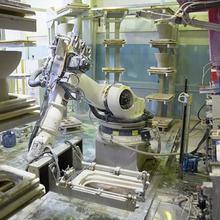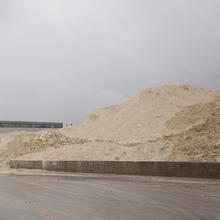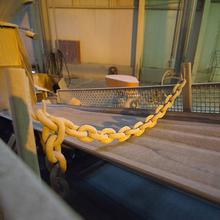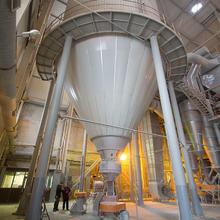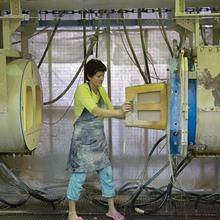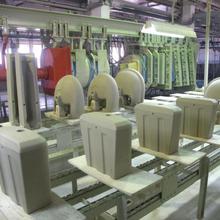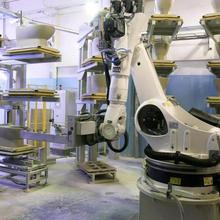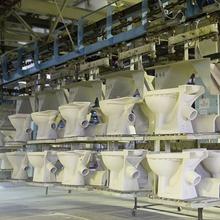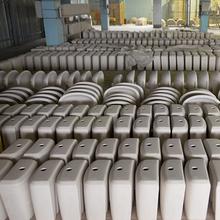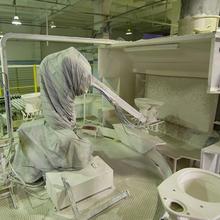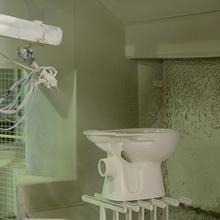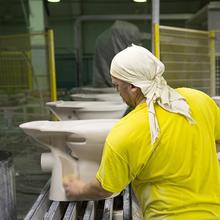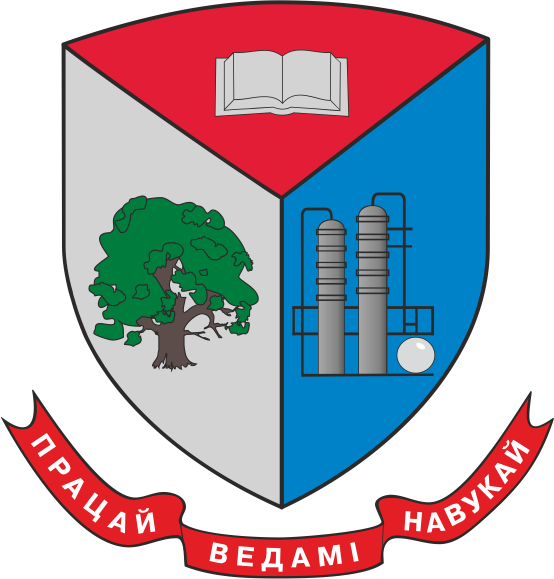“Keramin” uses two types of technologies for sanitary ware production at the “Stroyfarfor” Factory:
- plaster mould casting
- high-pressure polymeric mould casting
-
Automated plaster mould casting represents traditional technology for sanitary ware ceramics production. Today “Keramin” uses new automated casting machines and own-produces plaster moulds, made by the automated installation with weight batching and vacuum evaporation. This allows to increase plaster mould turnover to 100 cycles.
-
Automated high-pressure polymeric mould casting machines (supplied by the Italian company SACMI) – are the most advanced technical achievement in ceramics industry. They allow to shorten production time and to increase the quality of the products. At the same time, polymeric moulds have a longer cycle life. One mould is suitable for production of more than 25 000 pieces of sanitary ware.
Both of these production technologies are implemented at the factory, well integrating into a general technological scheme. Further, we will look closer at every step of the scheme.


